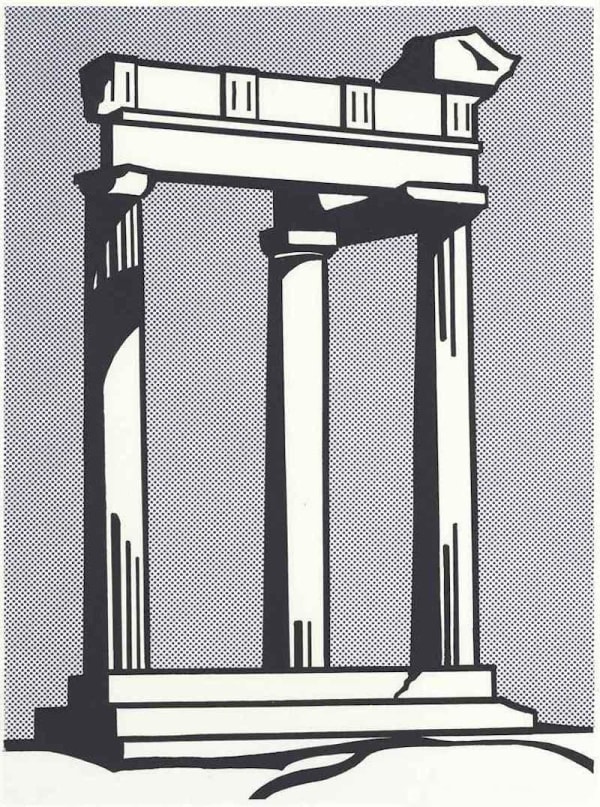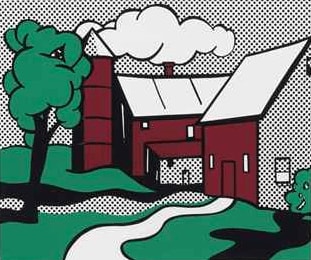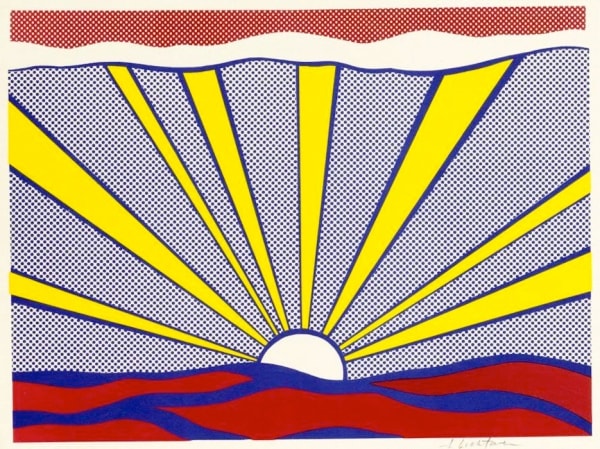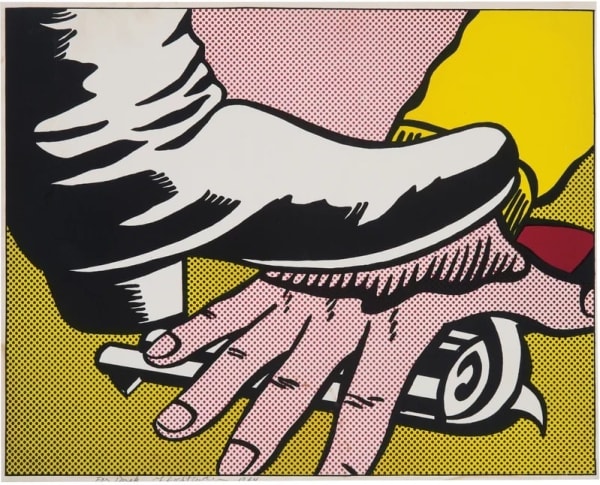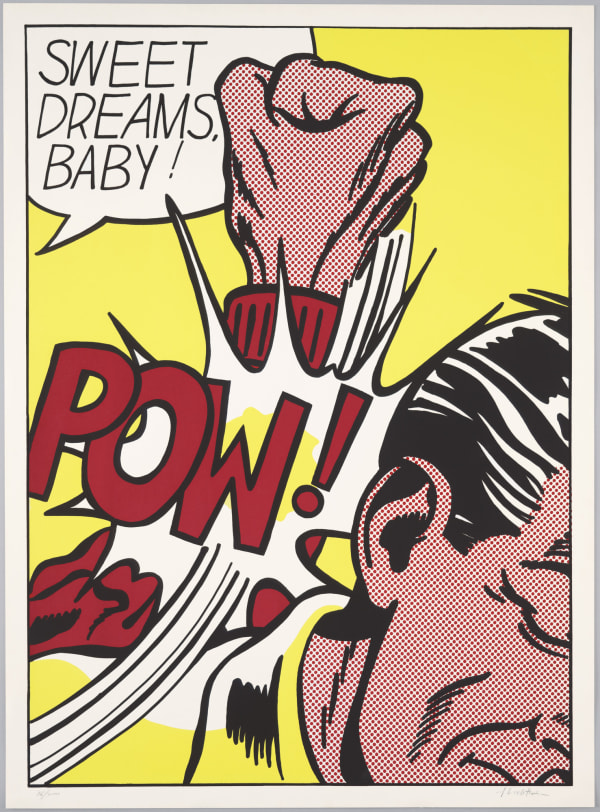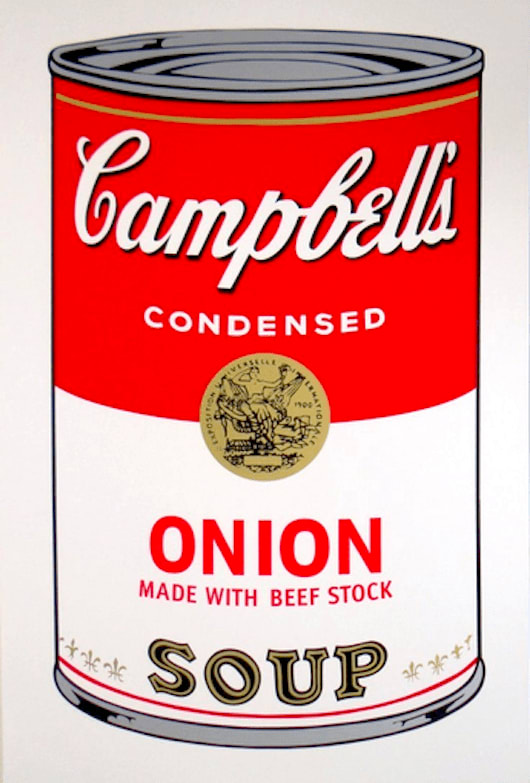
Roy Lichtenstein
58.4 x 68.6 cm
Roy Lichtenstein's Reverie print is a captivating example of the artist's iconic pop art style and his exploration of themes such as romance, nostalgia, and fantasy. Created in 1965, Reverie is part of Lichtenstein's larger body of work that appropriates imagery from comic books and popular culture to create bold and visually striking compositions.
At first glance, Reverie appears to be a scene lifted directly from the pages of a comic book, with its bold lines, primary colors, and dramatic expressions. The central figure, a woman with flowing hair and a dreamy expression, reclines against a pillow, lost in thought. Behind her, a speech bubble contains the word Reverie, suggesting that she is lost in a daydream or moment of contemplation.
What sets Reverie apart is Lichtenstein's masterful use of color and composition to evoke a sense of nostalgia and longing. The woman's wistful expression and the soft, dreamy quality of the image evoke a sense of romantic yearning, inviting viewers to project their own fantasies and desires onto the scene.
Moreover, Lichtenstein's use of Ben-Day dots, a printing technique commonly used in comic books, adds depth and texture to the image, creating a sense of visual dynamism and movement. The dots, arranged in precise patterns and varying sizes, give the print a sense of vibrancy and energy, drawing the viewer's eye across the composition.
Reverie can also be seen as a commentary on the pervasive influence of popular culture and mass media on our collective consciousness. By appropriating imagery from comic books and recontextualizing it within the realm of fine art, Lichtenstein challenges viewers to reconsider the value and significance of these seemingly trivial and disposable forms of entertainment.
Overall, Roy Lichtenstein's Reverie print is a captivating and evocative artwork that invites viewers to contemplate themes of romance, nostalgia, and fantasy. Through his bold visual style and his clever appropriation of comic book imagery, Lichtenstein creates a timeless and iconic image that continues to resonate with audiences today.
-
 Roy LichtensteinNew Seascape (C. 42), 1966
Roy LichtensteinNew Seascape (C. 42), 1966 -
 Roy LichtensteinMoonscape C. 37, 1965
Roy LichtensteinMoonscape C. 37, 1965 -
 Roy LichtensteinTemple (C. II 3) , 1964
Roy LichtensteinTemple (C. II 3) , 1964 -
 Roy LichtensteinCrak! C. II 2, 1963
Roy LichtensteinCrak! C. II 2, 1963 -
 Roy LichtensteinRed Barn (C.89), 1969
Roy LichtensteinRed Barn (C.89), 1969 -
 Roy LichtensteinCrying Girl (C. II 1), 1963
Roy LichtensteinCrying Girl (C. II 1), 1963 -
 Roy LichtensteinSunrise (C. II 7), 1965
Roy LichtensteinSunrise (C. II 7), 1965 -
 Roy LichtensteinShipboard Girl (C. II 6), 1965
Roy LichtensteinShipboard Girl (C. II 6), 1965 -
 Roy LichtensteinFoot And Hand (C. II 4), 1964
Roy LichtensteinFoot And Hand (C. II 4), 1964 -
 Roy LichtensteinSweet Dreams Baby (C.39), 1965
Roy LichtensteinSweet Dreams Baby (C.39), 1965 -
 Roy LichtensteinTwo Nudes (C. 284) , 1994
Roy LichtensteinTwo Nudes (C. 284) , 1994 -
 Andy WarholCream of Mushroom Soup F.S. II 53, 1968
Andy WarholCream of Mushroom Soup F.S. II 53, 1968 -
 Andy WarholTomato Soup F.S. II 46 From Soup Cans Portfolio I, 1968
Andy WarholTomato Soup F.S. II 46 From Soup Cans Portfolio I, 1968 -
 Andy WarholOnion Soup F.S. II 47, 1968
Andy WarholOnion Soup F.S. II 47, 1968
Join our mailing list
* denotes required fields
We will process the personal data you have supplied in accordance with our privacy policy (available on request). You can unsubscribe or change your preferences at any time by clicking the link in our emails.
This website uses cookies
This site uses cookies to help make it more useful to you. Find out more about cookies.


